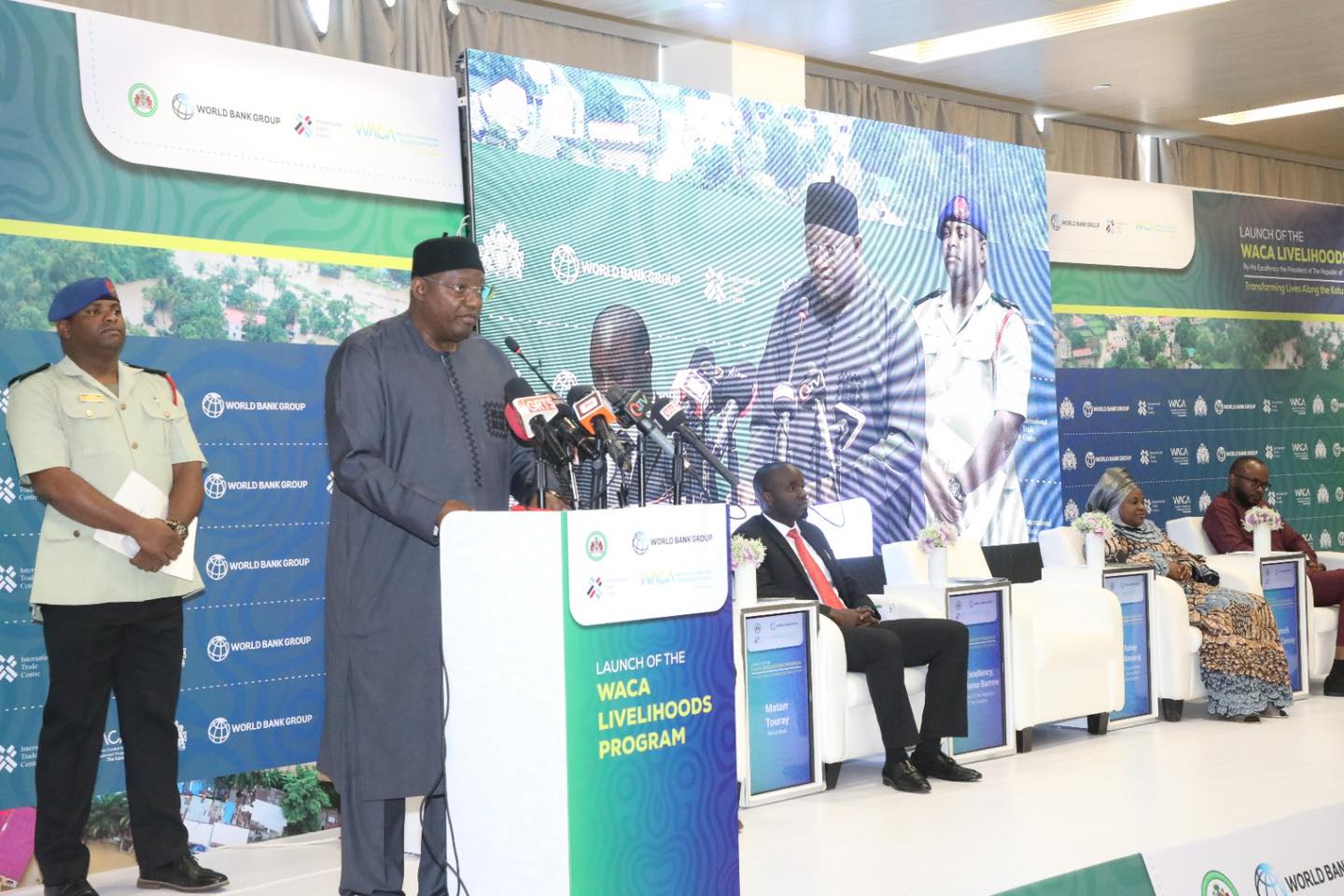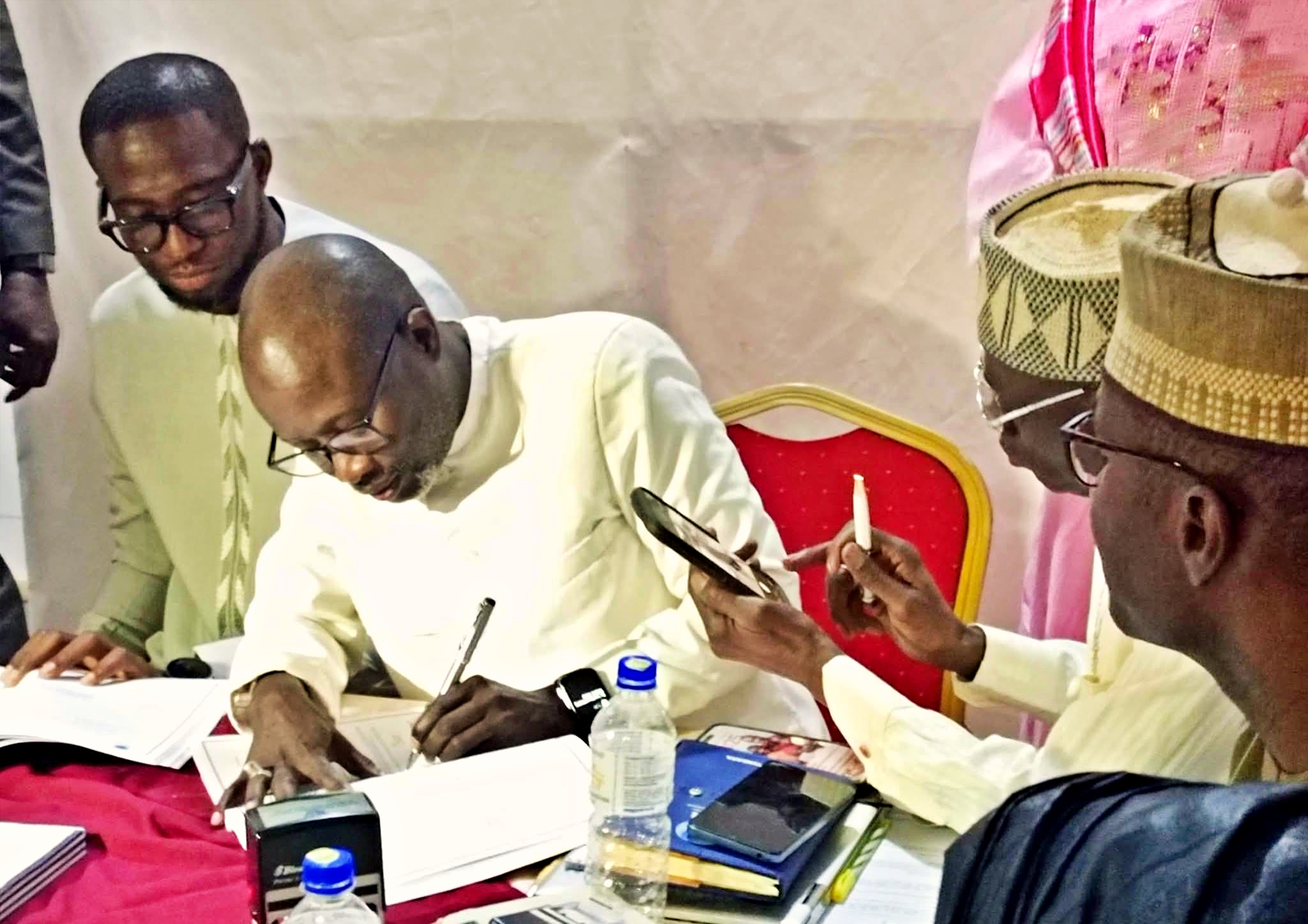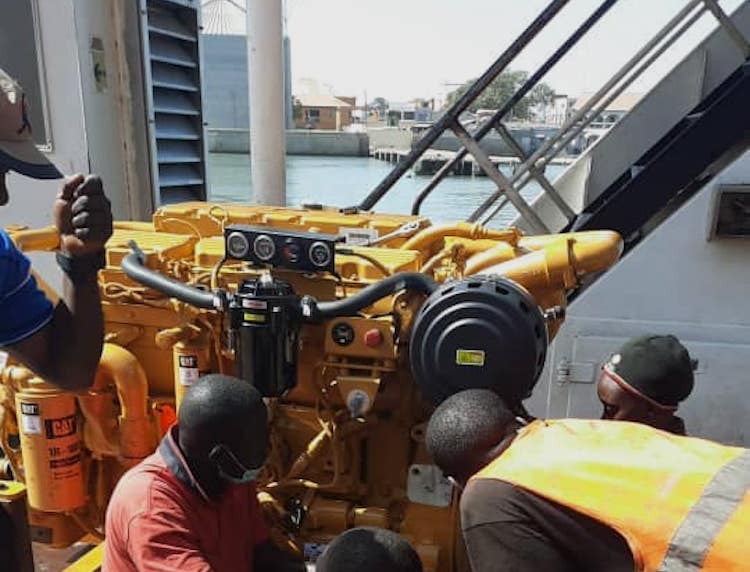There are three brand-new ferry engines sitting inactive at the Banjul Sea Port, while the Kunta Kinteh and Kanilai Ferries continue to experience frequent breakdowns that endanger passenger lives and severely hinder commerce.
These engines, which arrived more than a month ago from the esteemed Caterpillar Company in the United States, were meant to usher in a new era of dependability and efficiency for the Gambia Ferry Service.
However, they are still not installed, as a technological mismatch has left them imprisoned in their shipping containers, only a few meters from the waterways they were designed to traverse.
The main problem is not the engines per se, but rather the lack of necessary parts and the expertise needed to make them work. The inventory is devoid of propellers, electrical steering components, and an engine stand.
The reason for this is a lack of technical know-how in obtaining these items. This knowledge gap has not only caused the installation process to slow, but it has also sparked concerns about the long-term viability of maintaining such sophisticated technology.
The engines represent the difficulties of technological innovation in an industry that is finding it difficult to keep up, despite being a huge investment meant to support the Gambia’s ferry service.
The operating risks associated with the current fleet cannot be disregarded in the midst of these installation issues.
There are just two engines powering the Kunta Kinteh and Kanilai Ferries, which are essential to the daily journey of countless Gambians. With the possibility of an engine failure at sea posing a serious risk to passenger safety, this fragile condition is extremely dangerous.
In spite of these obstacles, the Gambia Port Authority (GPA) has intervened by providing financial assistance to guarantee the acquisition of the required equipment. This support emphasizes how vital the ferry service is to the Gambia’s transportation network and how crucial it is to get past the current obstacles.
The way forward necessitates not only monetary investment but also a determined attempt to close the technological knowledge gap that produced this deadlock.
To install the new engines and maintain the sustainability and dependability of the ferry service in the years to come, technical staff training, worldwide expert collaboration, and a long-term technological adaption strategy are crucial.
The way this issue is resolved will demonstrate the Gambia’s capacity to handle the challenges of modernization and technological advancement as it looks to the future.










